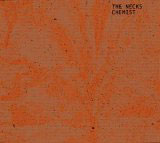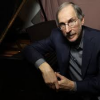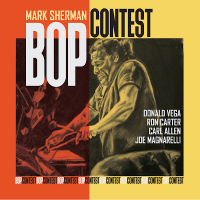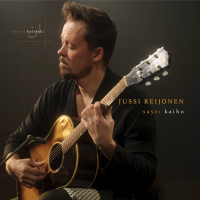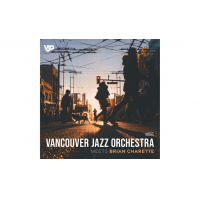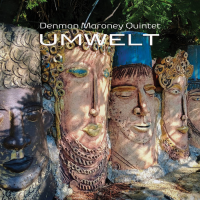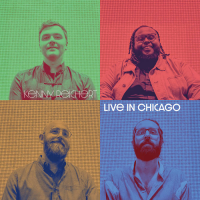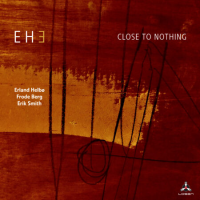Home » Jazz Articles » Extended Analysis » Joe Lovano: Joe Lovano: Streams Of Expression
Joe Lovano: Joe Lovano: Streams Of Expression
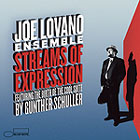 Joe Lovano
Joe LovanoStreams Of Expression
Blue Note Records
2006
Forget those ill-founded accusations of conservatism. Joe Lovano is a genuine innovator. He's uninterested in novelty for novelty's sake and he's very, very ambitious for his music. He makes things more interesting for everybody, including himself, by (no apologies for the pun) digging foundations. On Streams Of Expression, Lovano combines a new suite of his own with another by Gunther Schuller, programming a further two originals as an interlude and a third as something like an encore.
Schuller's suite is a compressed and recalibrated Birth Of The Cool: adapted and rescored, and augmented with new material. The original recordings were a launchpad for further development, and Schuller's suite gives Lovano access to that trajectory, within its new context. "Boplicity," "Move" and other of its original tunes, are reappraised and some of them combined into movements of a suite.
The first of the "Interludes" has Ellingtonian resonances. But even Ellington learned something from Birth Of The Cool. The same is true of Schuller, in relation to the luminescent ensemble climaxes here. But Schuller's great writing, marvellously performed by the ensemble, really sounds like nothing but itself.
The album opens, however, with the first two movements of Lovano's "Streams Of Expression" suite. They're something of an overture— sampling, summarising, and anticipating what's to come. First there's Lovano's light, breathy, meditative tenor in trio with Dennis Irwin (bass) and Lewis Nash (drums), a pared down line-up to which the programme will periodically return. The entry of band chords invites more frisky playing. Then, joined by the recently deceased John Hicks (piano) and the rest of the band, there's polyphony and the earliest form of free jazz—an extended introduction as it might be played by Louis Armstrong, Coleman Hawkins and Errol Garner.
Lovano finally leads off a succession of in-the-tradition, exciting solos: Barry Ries or Tim Hagans on trumpet, Larry Farrell on blurry trombone, and Hicks. The big chord at the end of the arranged conclusion sets up the second movement, "Cool."
Ambitious, big combinations need high-grade components, and "Cool" is grade-A, an arresting study of degrees of relaxation. Giving each hornman eight bars solo one after another, so building a continuous improvised line, Lovano rekindles the ancient art of the short recorded solo: a victim of a technology to arrive well after the original Birth Of The Cool recordings.
Lovano's major purpose here is to make great music while trying to demonstrate a continuity between the contained dissonances of 1948, and the further-out explorations of John Coltrane which followed in the '60s. Many people remain turned off by the sonic extremes and wildness of that later music, but Lovano sets out to explore its intelligibility.
Lovano remains the principal soloist throughout, with fellow saxophonists Steve Slagle and Gary Smulyan, amongst others, compelling when their turns come. The trio opening to the set was prelude to a venture some way out toward the wild, before Lovano's second movement brought things securely home.
Lovano's "Blue Sketches," a trio repainting the old standard "Russian Lullaby," then relaxes things again. The ensemble "Buckeyes," having declared itself son of the cool, grows quickly into the hot. The tempo ups, the harmonic stakes increase, until after some nice trumpet and tenor solo work it concludes with an alternation between, so to speak, Cool and Trane.
"Enchantment" is the first movement of the rest of Lovano's suite. He's listed playing alto clarinet, so presumably that's what sounds rather like a bass clarinet. The ensemble number "Second Nature" underlines the continuity Lovano seeks between 1948's implied dissonances and the overt dissonance pioneered in the 1960s. The magnificent rhythm trio do heroic work through succeeding passages where the hornmen first alternate, and then play all at the same time, each with his own improvised line in an experiment perilous. Nash's drum solo segues into "Fire Prophet," where Lovano picks up the newly devised Aulochrome.
The Aulochrome is a sort of double soprano saxophone. It's not unrelated in tonal possibilities to the manzello and stritch, two early experiments in saxophone technology abandoned except when Rahsaan Roland Kirk had them done up to serve his particular musical purposes. As Lovano pioneers the Aulochrome, Nash sounds like a double drummer. Kirk comes to mind as Lovano explores the wild reaches of the new horn. It does so without sounding oppressive or fanatical, or like mechanical, sub-Pharaoh Sanders—which can happen on very fiercely played tenor.
In contrast, Lovano plays tenor throughout this set from within the cool conception of the horn—as he did playing beside Lee Konitz with Paul Motian, and also on his recent quartet dates with Hank Jones. That tenor sound and the trio format and indeed Schuller's suite are home bases or base camps for the ascents made in the course of the overall set. Risks are taken, but the head is not lost.
There's something like an encore, and Lovano uses Aulochrome to let off more tension on the boppish trio blues, "Big Ben," which is the last track.
The boundaries Lovano characteristically confronts are usually those which some fancy exist between sub-genres within jazz. Lovano doesn't believe these are valid compartments, and posits that the pioneers of 1948 and 1964 alike shared a concern to to open up the music rather than bury the past. The rich range of stylistic validity shouldn't be obscured by obsessive references to how long anybody might have been playing in this or that generic style. Streams Of Expression celebrates diversity. Recording it necessitated taking some big risks—but they paid off.
Personnel: Joe Lovano: tenor saxophone, alto clarinet, Aulochrome; Tim Hagans: trumpet; Barry Ries: trumpet; Larry Farrell: trombone; Michael Parloff: flute; Charles Russo: clarinet, bass clarinet; Steve Slagle: alto and soprano saxophones, flute; George Garzone: tenor saxophone; Ralph Lalama: tenor saxophone, clarinet; Gary Smulyan: baritone sax, bass clarinet; John Hicks: piano; James Weidman: piano; Dennis Irwin: bass; Lewis Nash: drums.
Tracks: Streams Of Expression Suite: Streams (Pt.I); Cool (Pt. II); The Birth of the Cool Suite: Prelude; Moon Dreams; Interlude No. 1; Move; Interlude No. 2; Boplicity; Postlude; Blue Sketches; Buckeyes; Streams Of Expression Suite: Enchantment (Pt. III); Second Nature (Pt. IV); Fire Prophet (Pt. V); Big Ben.
Track Listing
Streams of Expression: Streams (Pt. I); Cool (Pt. II). The Birth of the Cool Suite: Prelude/Moon Dreams; Interlude No.1/Move/Interlude No.2; Boplicity/Postlude. Blue Sketches; Buckeyes; Streams of Expression: Enchantment (Pt. III); Second Nature (Pt. IV); Fire Prophet (Pt. V). Big Ben.
Personnel
Joe Lovano
drumsJoe Lovano: tenor saxophone, alto clarinet, Aulochrome; Tim Hagans: trumpet (1-5,7-10); Barry Ries: trumpet (1-5,7-10); Larry Farrell: trombone (1-5,7-10); Steve Slagle: alto saxophone, soprano saxophone, flute (1-5,7-10); George Garzone: tenor saxophone (1,2,8-10); Ralph Lalama: tenor saxophone and clarinet (3-5); Charles Russo: clarinet, bass clarinet (3-5); Michael Parloff: flute (3-5); James Weidman: piano (3-5,7); Gary Smulyan: baritone saxophone (1-5,7-10); John Hicks: piano (1,2,8-10); Dennis Irwin: bass; Lewis Nash: drums; Gunther Schuller: arranger/conductor (3-5).
Album information
Title: Streams of Expression | Year Released: 2006 | Record Label: Blue Note Records
Tags
PREVIOUS / NEXT
Joe Lovano Concerts
Support All About Jazz
 All About Jazz has been a pillar of jazz since 1995, championing it as an art form and, more importantly, supporting the musicians who make it. Our enduring commitment has made "AAJ" one of the most culturally important websites of its kind, read by hundreds of thousands of fans, musicians and industry figures every month.
All About Jazz has been a pillar of jazz since 1995, championing it as an art form and, more importantly, supporting the musicians who make it. Our enduring commitment has made "AAJ" one of the most culturally important websites of its kind, read by hundreds of thousands of fans, musicians and industry figures every month.


